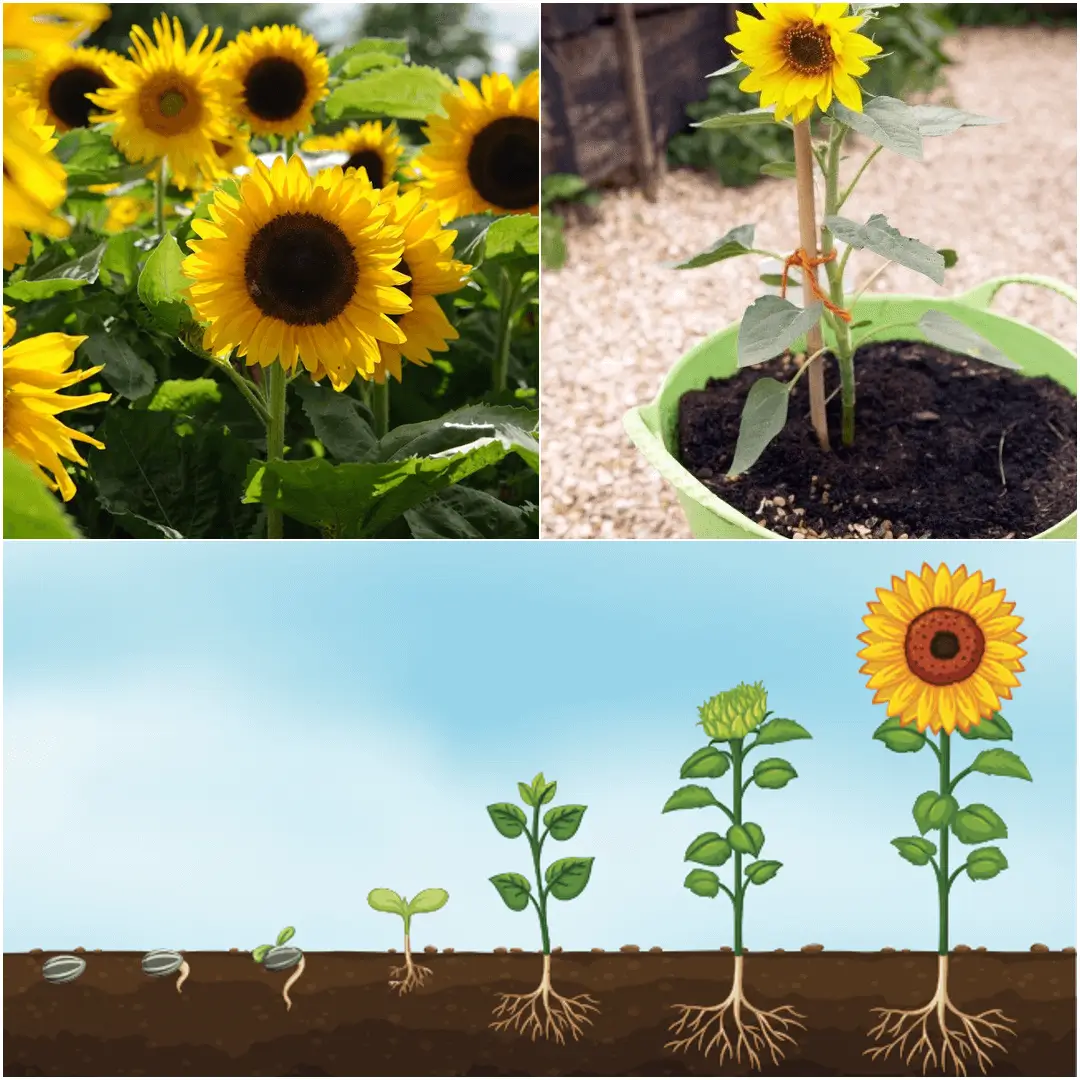Sunflowers are the perfect addition to any garden. Their bright, cheerful blooms can lift anyone’s mood, and they’re surprisingly easy to grow. Whether you’re looking to add height to your garden with towering giants or seeking smaller varieties for containers, growing sunflowers can be an incredibly rewarding experience. Want to know how to grow sunflowers in your own garden? Let me walk you through the entire process from planting to harvesting.
Choosing the Right Variety of Sunflowers
Before you get your hands dirty, you’ll want to pick the right type of sunflower for your space and purpose.
Popular Sunflower Varieties
You might be familiar with the iconic ‘Mammoth’ sunflower that can tower over 12 feet tall, but did you know there are also dwarf varieties like ‘Teddy Bear’ that grow just 2-3 feet? Sunflowers come in all shapes and sizes, so there’s a variety for every gardener, no matter the space.
Selecting Sunflowers for Your Garden
Think about what you want from your sunflower. Do you want to cut them for bouquets? If so, choose a pollen-free variety like ‘Sunrich Gold.’ Or are you hoping to harvest sunflower seeds for snacks? The classic ‘Mammoth’ variety will be your best bet.
The Perfect Location for Planting Sunflowers
Sunflowers are sun-loving plants. To thrive, they need plenty of sunlight and a good spot to settle their roots.
Sunlight Requirements
Sunflowers need 6 to 8 hours of sunlight each day to flourish. They love basking in the sun, and the more sunlight they get, the better they grow. Aim for a bright spot in your garden.
Wind Protection for Tall Varieties
If you’re growing a tall variety, like the towering ‘Mammoth,’ it’s important to shelter them from strong winds. Planting along a fence or near a building can help prevent them from toppling over when a gust hits.
Soil Preparation for Sunflowers
Sunflowers aren’t too fussy about soil, but giving them the right start can make all the difference.
Soil Type
They prefer well-draining soil enriched with organic matter or composted manure. If your soil tends to hold water or become compacted, consider amending it before planting.
Ideal Soil pH
Sunflowers do well in soil with a pH between 6.0 and 7.5, which means they can thrive in slightly acidic to mildly alkaline environments.
Planting Sunflowers
Now that you’ve picked your spot and prepped your soil, it’s time to plant!
Planting Depth and Spacing
Plant sunflower seeds about 1 to 1½ inches deep and space them roughly 6 inches apart. If you’re planting smaller varieties, you can space them a little closer together. Once they sprout and grow to about 6 inches tall, thin them to keep the strongest plants.
Best Time to Plant Sunflowers
The best time to plant sunflower seeds is after the last frost. In the northern U.S. and Canada, this is typically between April and mid-June. For southern regions, mid-March or early April is ideal. The soil temperature should be at least 50°F (10°C) to ensure proper germination.
Direct Sowing vs. Transplanting
Sunflowers don’t like having their roots disturbed, so direct sowing is the way to go. If you’re planting in containers, make sure the container is large enough for the roots to spread out.
Caring for Growing Sunflowers
Once your sunflowers start growing, they don’t need too much attention, but a little care goes a long way.
Watering Needs
Water your sunflower seedlings around the roots. Once they’re established, deep watering once a week is usually sufficient unless the weather is exceptionally hot or dry.
Fertilizing Sunflowers
Sunflowers are heavy feeders, meaning they need a nutrient-rich environment to thrive. Apply a light, slow-release fertilizer when planting. Avoid overfertilizing, as this can cause weak stems that are prone to breaking.
Supporting Tall Varieties
If you’re growing tall sunflowers, they might need some support. Bamboo stakes are perfect for helping these giants stay upright, especially if they’re exposed to wind.
Common Pests and Diseases
These hardy plants are relatively pest-resistant, but there are a few critters and diseases to watch out for.
Pests to Watch Out For
Birds, squirrels, and even deer love sunflower seeds as much as we do. To protect your plants, consider using barrier devices or netting once the seed heads begin to mature.
Common Sunflower Diseases
While sunflowers are pretty resilient, they can still fall victim to mildew, rust, and fungal leaf spots. Keep an eye on your plants and treat any fungal infections with a garden fungicide.
Harvesting Sunflowers
Once have bloomed, it’s time to harvest either the flowers or seeds, depending on your goal.
Harvesting for Bouquets
For beautiful sunflower bouquets, cut the main stem just before the flower bud opens. This will encourage more side blooms. Always cut stems early in the morning to avoid wilting.
Harvesting Sunflower Seeds
When the back of the flower head turns brown and the seeds look plump, it’s time to harvest. Simply cut the head off, dry it, and remove the seeds by hand or using a washboard. Store seeds in a cool, dry place.
Fun Facts and Sunflower Wisdom
Sunflowers are more than just pretty faces. Did you know that Native Americans used sunflower oil to treat skin ailments? Or that sunflowers were a symbol of courage in some cultures? Sunflowers have a rich history, and their significance goes beyond just their stunning looks.
Growing these vibrant beauties is a rewarding experience that doesn’t require much effort. Whether you’re planting them for their beauty, seeds, or to attract pollinators, these towering blooms bring joy and a burst of sunshine to any garden. With the right care, you’ll be rewarded with tall, radiant flowers and possibly some tasty seeds to enjoy!
FAQs:
Is a sunflower easy to grow?
Yes! These cheerful flowers are quite easy to grow, even for beginners. They require minimal care, making them a perfect addition to any garden.
How long should it take for a sunflower to grow?
Most sunflower varieties take about 70 to 95 days to fully mature, depending on the type you’re growing.
How to grow sunflowers at home?
Growing these bright blooms at home is simple! Choose a sunny location, plant the seeds directly in the ground after the last frost, and water them regularly. With enough sunlight and occasional care, you’ll soon have beautiful flowers blooming in your garden.
Where do sunflowers grow best?
These vibrant plants grow best in areas with full sunlight and well-draining soil. They thrive in locations where they can get 6 to 8 hours of direct sunlight per day, making them ideal for open fields or sunny garden spots.


